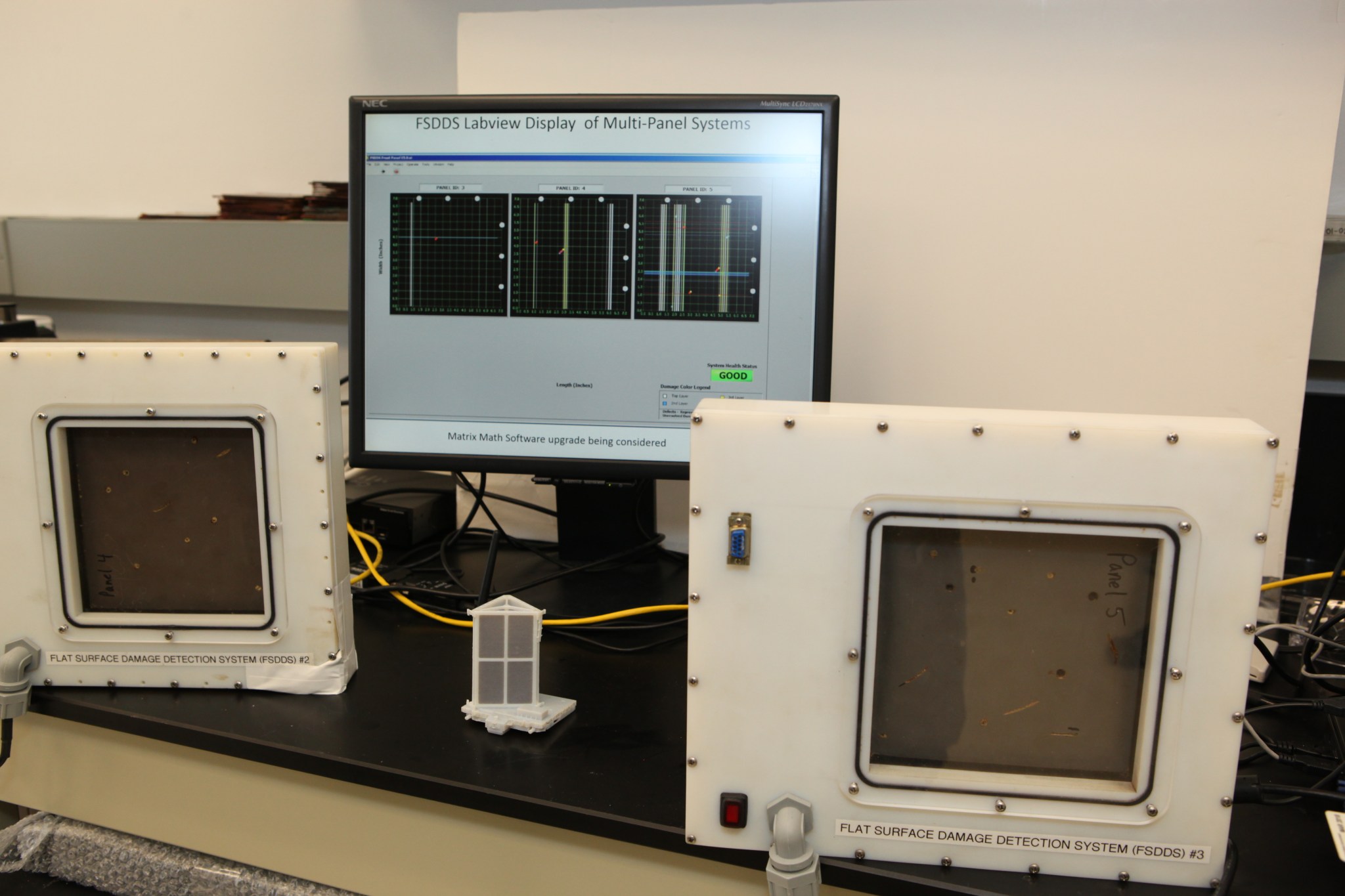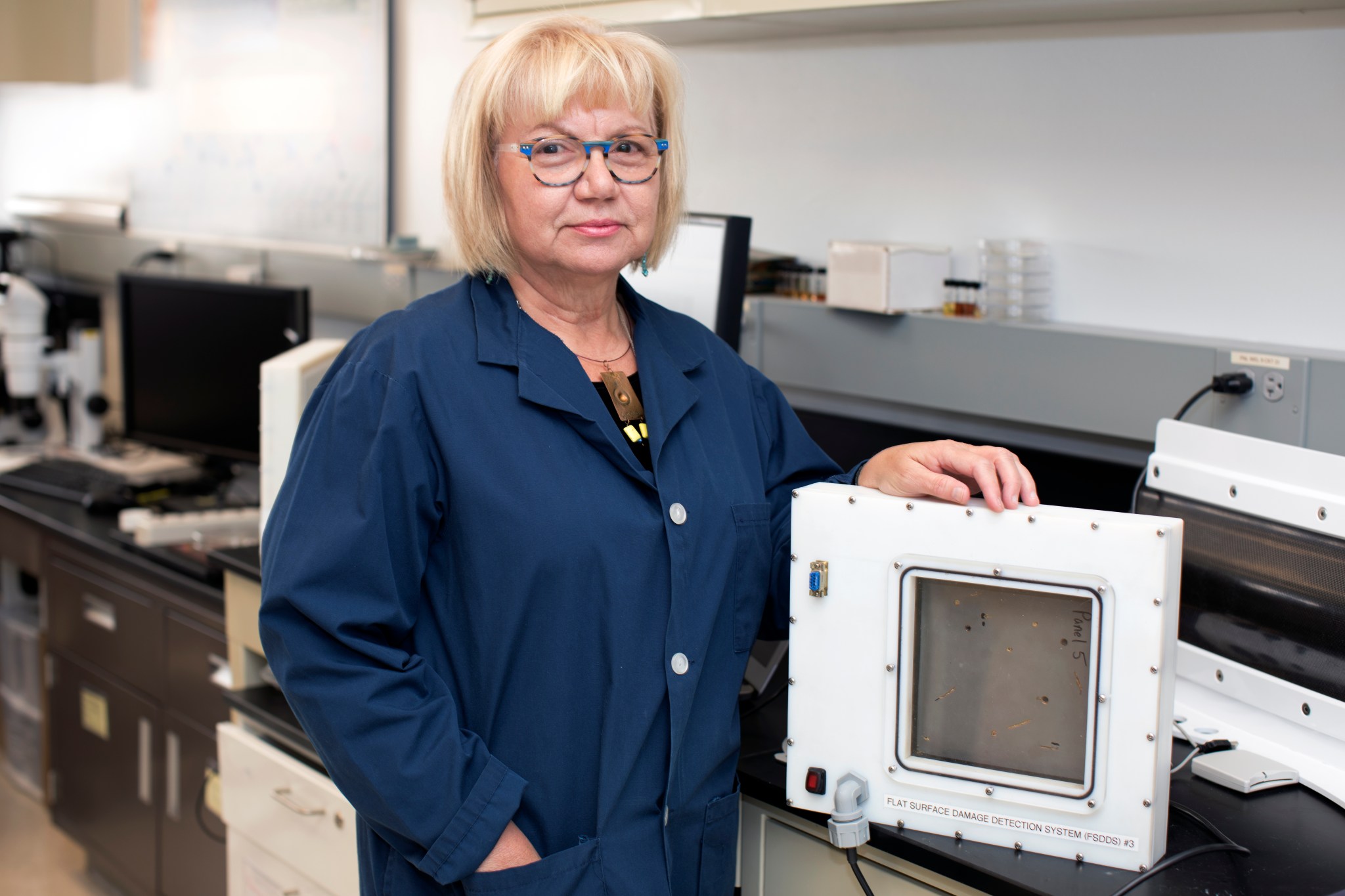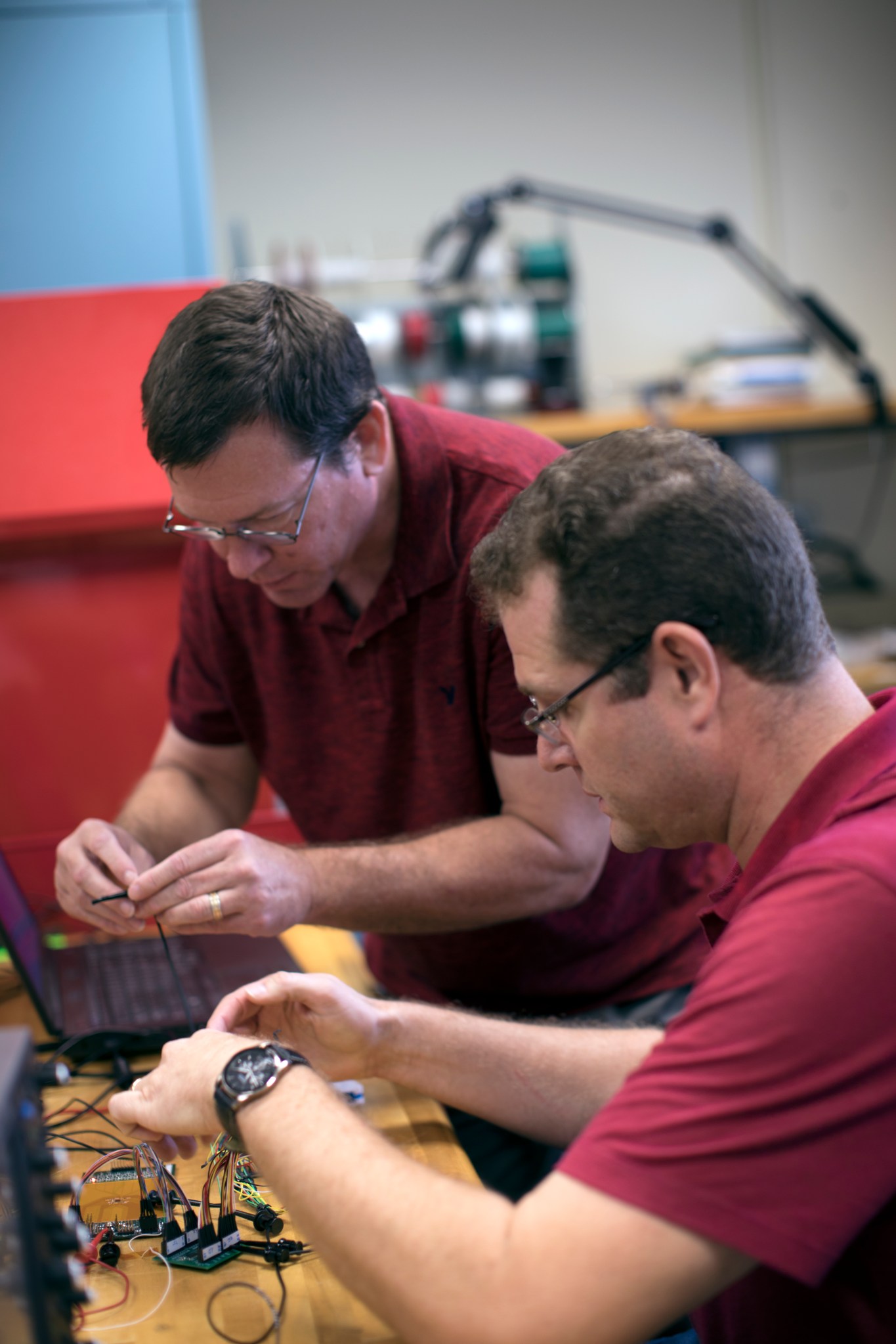There are few ways for astronauts to know exactly when the outside of their spacecraft has been damaged, but that may change in the future with an invention that acts like a sensory skin to pick up signs of damage in real-time. The invention uses a series of several technologies to create circuits printed on thin layers and that can be embedded in a spacecraft’s structure, scientists behind the invention said.
If successfully incorporated, the innovation could also be applied to a host of satellites, aircraft and even habitats on other worlds.
Micrometeoroids and orbital debris pose threats to spacecraft as they travel at speeds of 17,500 mph in low-Earth orbit, and 24,000+ mph for trips to the moon and deep space. As space shuttle windows revealed, something as small as a paint chip moving at that velocity can punch through several layers of glass.
Under development at NASA’s Kennedy Space Center in Florida, the Flexible Damage Detection System technology has been pursued as a possible solution to NASA’s problem of figuring out in real-time where a spacecraft is damaged and how seriously.
If something pierces a spacecraft’s hull – or the first layer or two – there are very limited ways for astronauts aboard a spacecraft to know there might be damage. An impact that goes all the way through and causes a leak would set off alarms, but otherwise the current methods to detect damage require either a camera inspection or a spacewalking astronaut. Nor is there a precise way to pinpoint exactly in real-time where the damage occurred if not visible to the eye or camera so astronauts can assess it.
“I kind of look at it like a sensory skin,” said Martha Williams, the scientist leading the development team. “It’s a sensory system that tells us where we are damaged and the level of intensity.”
The sensory system comprises several systems from low-voltage electric to circuits printed on Kapton thermal insulation film to unique software that tracks the damage.
“There are a lot of technology systems that we leveraged for this,” said fellow inventor Tracy Gibson, a scientist with Vencore.
A big part of the work also includes making the manufacturing methods more efficient so the technology can more easily transfer to commercial companies for potential use, Williams said.
Right now for development and demonstration on the ground, the largest square of sensory panel is 6-by-6 inches and it’s connected to wiring and a computer that monitors the system. Scientists and engineers envision tiling the squares together like a quilt to make a complete sensor network. They could be foldable and could be used in an inflatable or expandable spacecraft in the future.
Depending on the approach, a spacecraft could have a detection layer wrapping it completely, or just covering a certain area over a particularly critical system.
“It’s tailorable, so it can be designed to the specifications of the end user,” Gibson said Gibson. “You can tailor it to detect small damages or to pick up large damages and depth of damage.”
The damage detector could also be applied to the outside of a habitat on the lunar or Martian surface to calculate damage from small impacts. On Earth, the system could perhaps also be applied to the outside of airplanes to tell pilots when their airframe has been impacted and may be compromised.
In fact, one of the sensor’s early tests saw it demonstrated on the outside of a habitat module prototype for a mission simulation that took place in Flagstaff, Arizona. Depending on funding, the team hopes to perform more tests and build new prototypes that continue to advance the concept closer to a system that can be flight tested and then applied to future spacecraft designs.
“We want to bring solutions to NASA’s problems,” Williams said. “We like to solve problems, I don’t think we can even stop inventing, it’s how we think. It’s who we are.”






























